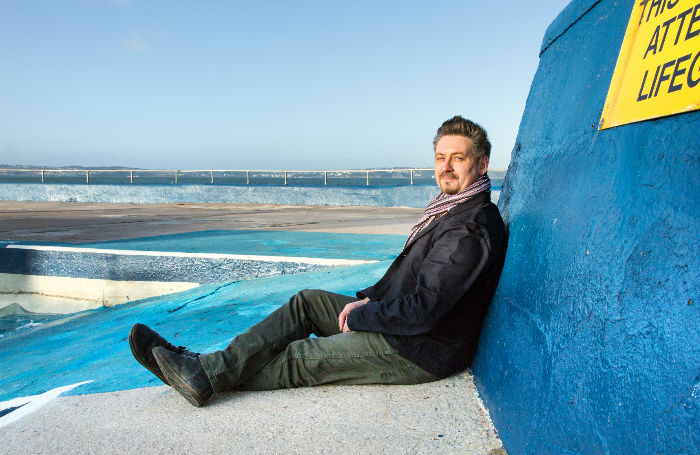Darren started his architectural career as a technician on a youth training scheme before going on to train as an architect at Portsmouth University School of Architecture. He now teaches part-time at Portsmouth School of Architecture, and is a visiting critic at Brighton University. Darren founded Studio B.a.d. Architects in 2018.

I still sometimes think that I gatecrashed the profession. Even now I rarely refer to myself as an architect as it seems a bit of a grand title – in this day and age it’s all about teamwork and collaboration. I don’t ever want to become complacent or think that I’ve somehow ‘arrived’. I’m more inclined to tap myself on the shoulder and say: ‘hang on a minute, don’t forget where you came from, and make sure you’re continuing to push yourself.’
My dyslexia wasn’t diagnosed until the first year of my degree, so my school years were very frustrating and I’ve taken a roundabout route to get into the profession.
I guess I don’t see myself as fitting into the traditional view of who or what an architect is. I struggled academically throughout primary and secondary school. The teachers told my parents: ‘he tries hard, but there’s not a great deal of potential there.’ My dyslexia wasn’t diagnosed until the first year of my degree, so my school years were very frustrating and I’ve taken a roundabout route to get into the profession.
My own expectations began to rise when others encouraged me. At the age of 18 I worked in a local architect’s practice training to become an architectural technician and my colleagues told me that I needed to set my sights higher. They believed in me, so I started to believe in myself.
That experience informs how I am as a teacher: I can see the potential in people and try to support them, notice what they’re really good at and make sure they don’t disappear from the profession when they hit inevitable obstacles. It’s much tougher than when we were at university because students have a lot more financial stress, so it’s all the more important we go out of our way to encourage them.
I’d like to think that I’ve got a strong moral compass and that comes from my parents. I believe that as you go through life you encounter people who do things for you - support you, mentor you and become your role models. I wouldn’t be where I am now without them. It’s important to realise that you can do the same for others. I don’t want to look back as an old man and think that I achieved a lot as an architect, or even as a father, but that I didn’t give back to society in some way. If I’ve helped anyone, I just hope that they will pass it on by helping someone else – then it becomes a kind of chain reaction.
At the age of 18 I worked in a local architect’s practice training to become an architectural technician and my colleagues told me that I needed to set my sights higher. They believed in me, so I started to believe in myself.
Architecture has, in the past, been seen as world predominantly inhabited by men. I think that the RIBA has a responsibility to try and change that perception. The good news is that we are beginning to see schools of architecture getting a more diverse intake, so we have to work out what we’re going to do to keep them. That particularly applies to female students because I believe we are losing too many of them and I don’t really know what’s going on. It’s something we need to understand better as a profession, so we can do something about it.
Our workplaces suffer as a result of having too few female designers and architects. The practice where I work now is diverse in lots of different ways – not only in gender – and we are the richer for it. Everybody is much more open to change and not overly attached to taking the tried and tested route. There is a healthy challenge that goes on and that’s vital because if you aren’t being challenged, you aren’t learning and that limits what you can produce for your clients.
The recession has meant that we’ve all come out of a really traumatic period for businesses. We used to sit at our desks with blinkers on, focused on our own work but now I’m finding that small and medium-sized practices are looking outwards, connecting with one another and problem-solving together. It’s really refreshing and hopefully we can push that way of working out into bigger businesses and across the profession. I want a future characterised by innovative architecture, exciting collaborations and architects standing up for what they believe in.









